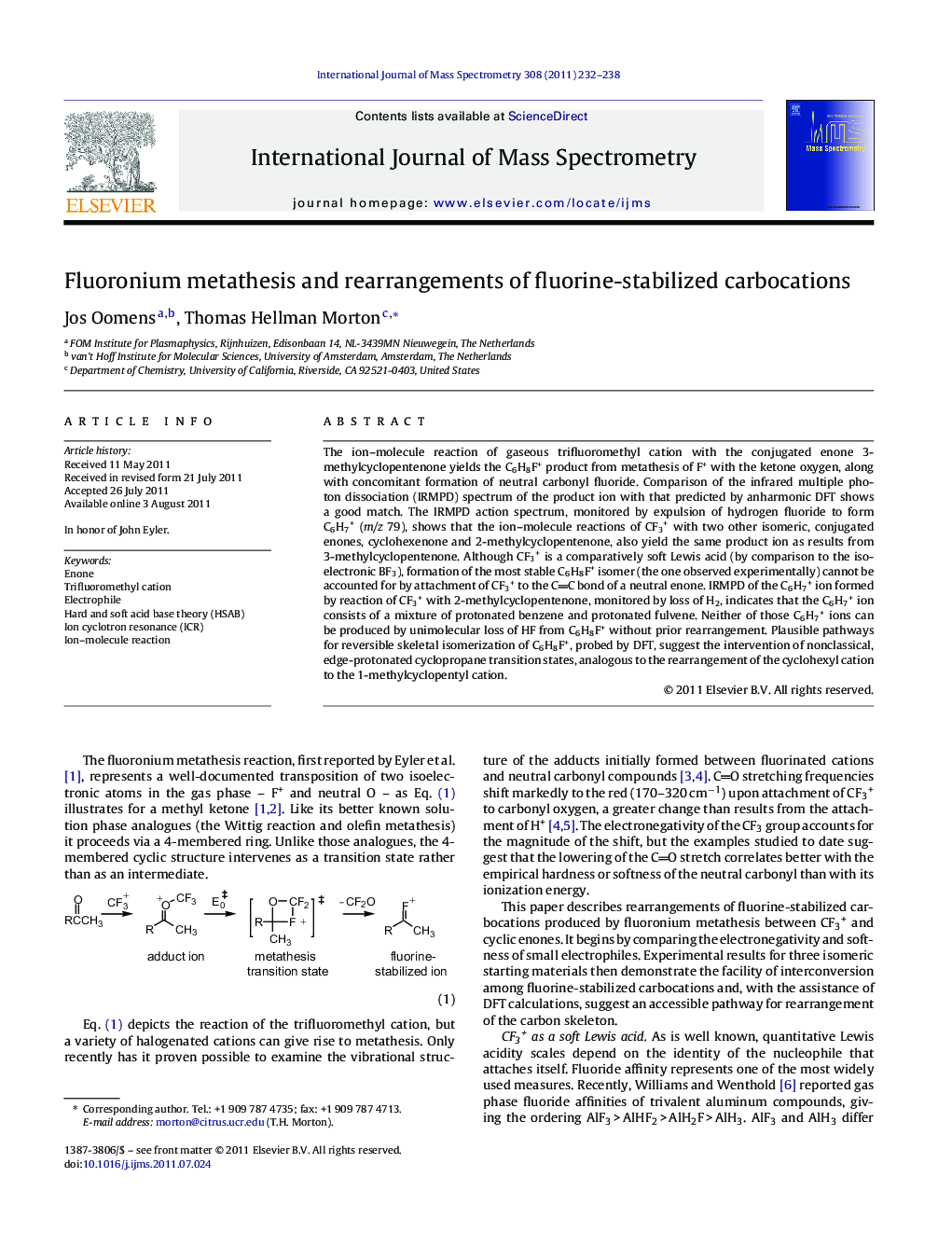| کد مقاله | کد نشریه | سال انتشار | مقاله انگلیسی | نسخه تمام متن |
|---|---|---|---|---|
| 1192875 | 1492302 | 2011 | 7 صفحه PDF | دانلود رایگان |

The ion–molecule reaction of gaseous trifluoromethyl cation with the conjugated enone 3-methylcyclopentenone yields the C6H8F+ product from metathesis of F+ with the ketone oxygen, along with concomitant formation of neutral carbonyl fluoride. Comparison of the infrared multiple photon dissociation (IRMPD) spectrum of the product ion with that predicted by anharmonic DFT shows a good match. The IRMPD action spectrum, monitored by expulsion of hydrogen fluoride to form C6H7+ (m/z 79), shows that the ion–molecule reactions of CF3+ with two other isomeric, conjugated enones, cyclohexenone and 2-methylcyclopentenone, also yield the same product ion as results from 3-methylcyclopentenone. Although CF3+ is a comparatively soft Lewis acid (by comparison to the isoelectronic BF3), formation of the most stable C6H8F+ isomer (the one observed experimentally) cannot be accounted for by attachment of CF3+ to the CC bond of a neutral enone. IRMPD of the C6H7+ ion formed by reaction of CF3+ with 2-methylcyclopentenone, monitored by loss of H2, indicates that the C6H7+ ion consists of a mixture of protonated benzene and protonated fulvene. Neither of those C6H7+ ions can be produced by unimolecular loss of HF from C6H8F+ without prior rearrangement. Plausible pathways for reversible skeletal isomerization of C6H8F+, probed by DFT, suggest the intervention of nonclassical, edge-protonated cyclopropane transition states, analogous to the rearrangement of the cyclohexyl cation to the 1-methylcyclopentyl cation.
Figure optionsDownload high-quality image (81 K)Download as PowerPoint slideHighlights
► Halonium metathesis of CF3+ with 3-methylcyclopentenone gives the most stable C6H8F+.
► CF3+ also gives the most stable isomer with cyclohexenone and 2-methylcyclopentenone.
► CF3+ reacts with conjugated enones to give C6H7+, which forms via HF loss from C6H8F+.
► The C6H7+ ion is a mixture of protonated benzene plus protonated fulvene.
► The most stable C6H8F+ cannot lose HF to give either C6H7+ isomer without rearranging.
Journal: International Journal of Mass Spectrometry - Volume 308, Issues 2–3, 1 December 2011, Pages 232–238